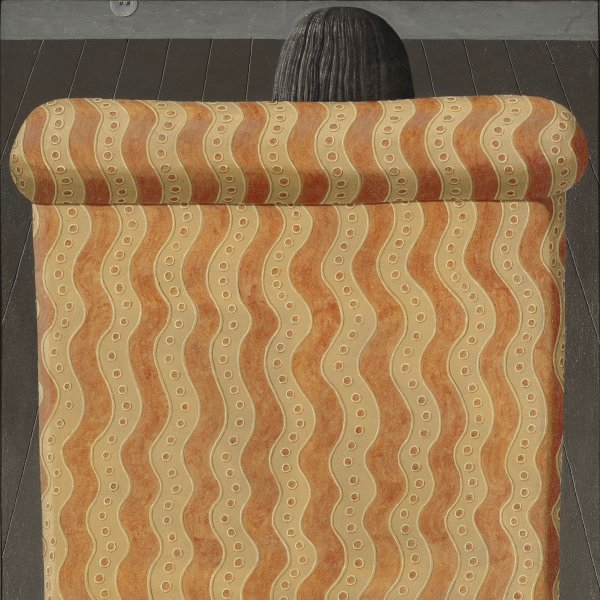Domenico Gnoli
Rome, 1933-New York, 1970
The Italian artist Domenico Gnoli was born into a family with ties to the arts. His father was the art historian Umberto Gnoli and his mother was a painter and ceramist. In addition to the grounding he received at home, he studied under Carlo Alberto Petrucci, who as early as 1950 encouraged himto exhibit a series of drawings at Rome’s Galleria La Cassapanda. For a short time in 1952 he attended classes in stage design at the Accademia di Belle Arti in Rome, which he abandoned to become an actor with the Compagnia Pilotto-Carraro Miserocchi. His contact with the world of the theatre was a stepping stone to his success in designing the sets for numerous theatre productions thereafter, such as Shakespeare’s As You Like It, directed by Robert Helpmann and performed at the Old Vic Theatre in London in 1955.
In 1956 Gnoli travelled to New York for his first one-man show in the United States at the Sagittarius Gallery and a year later he settled in the city, where he worked as a reputed illustrator of magazines such as Vogue and Sports Illustrated.
At the beginning of the 1960s, Gnoli decided to concentrate more on his career as a painter. His realistic, immobile work was focused on representing everyday objects such as chairs, sofas and beds and was very well received by critics and a public in touch with the cult of consumer society objects and Pop sensibility. However, his work is tinged with echoes of European art movements of the first half of the century, such as Surrealism, magical realism and metaphysical painting, which set him apart from this movement of American origin.
Gnoli travelled all over the world and spent the last years of his life in the town of Deià in Mallorca with his wife, the artist Yannick Vu. He died of cancer at thirty-seven at the height of his artistic career.
In 1956 Gnoli travelled to New York for his first one-man show in the United States at the Sagittarius Gallery and a year later he settled in the city, where he worked as a reputed illustrator of magazines such as Vogue and Sports Illustrated.
At the beginning of the 1960s, Gnoli decided to concentrate more on his career as a painter. His realistic, immobile work was focused on representing everyday objects such as chairs, sofas and beds and was very well received by critics and a public in touch with the cult of consumer society objects and Pop sensibility. However, his work is tinged with echoes of European art movements of the first half of the century, such as Surrealism, magical realism and metaphysical painting, which set him apart from this movement of American origin.
Gnoli travelled all over the world and spent the last years of his life in the town of Deià in Mallorca with his wife, the artist Yannick Vu. He died of cancer at thirty-seven at the height of his artistic career.




